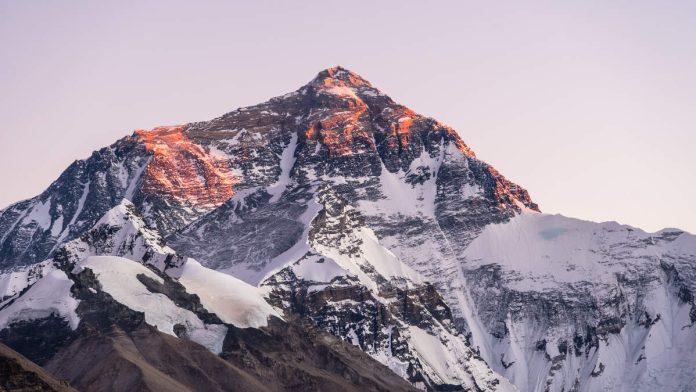Mount Everest is the world’s tallest mountain, towering over other peaks in the Himalayas at 29,032 feet above sea level. It was born around 45 million years ago when the tectonic plates beneath the Indian subcontinent and Eurasia collided.
Since that collision, Everest has continued to grow at double the rate scientists predicted. When researchers measured the growth, they found Everest was growing at two millimeters per year instead of one millimeter per year. The growth rate has left scientists puzzled until now.
In a paper published in the scientific journal Nature Geoscience, researchers explain why Everest has gained between 50 and 160 feet in elevation since its formation.
They said that 89,000 years ago, two rivers, the Kosi and Arun, combined into a larger river. The newly formed river eroded the base of the Himalayas about 50 miles from Mount Everest. As the erosion washed away rocks and soil from the base of the mountain, other parts started to rise, a process known as isostatic rebound.
“Essentially, as the river carved away more rocks, the Earth’s crust rebounded, rising like a boat when weight is removed,” Dai Jingen, a geoscientist at China University of Geosciences in Beijing and a co-author of the study, told NBC News.
“While not entirely revolutionary, these findings are certainly surprising,” Dai said. “It also emphasizes the importance of viewing the Earth as an interconnected system, where changes in one area can have surprising and significant impacts elsewhere.”

Recent Comments